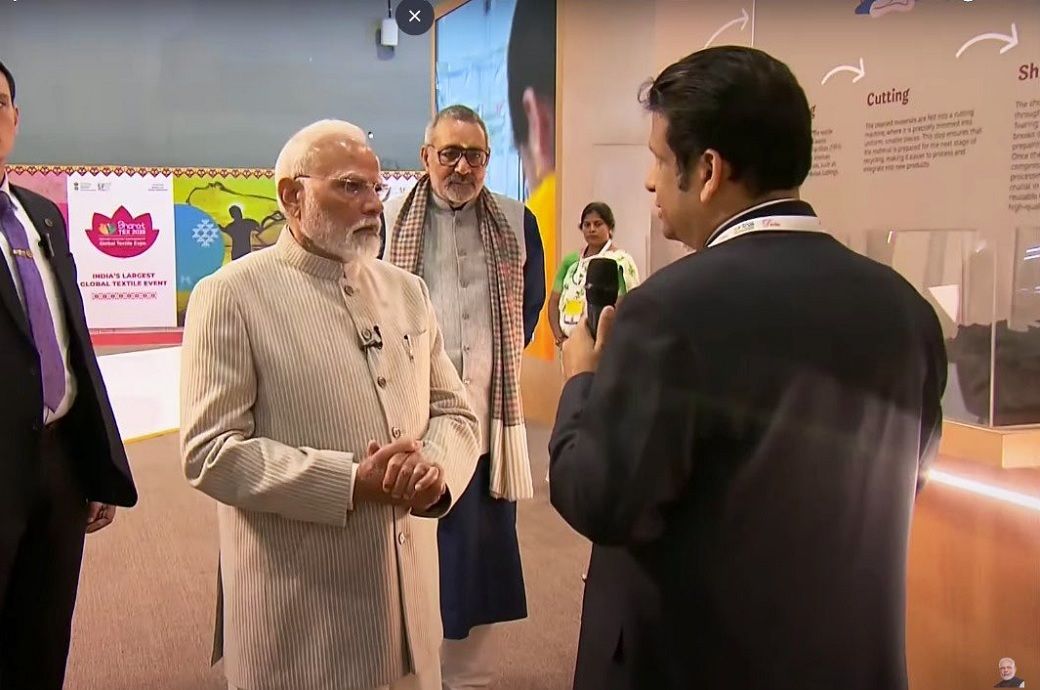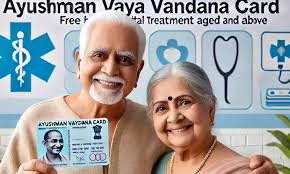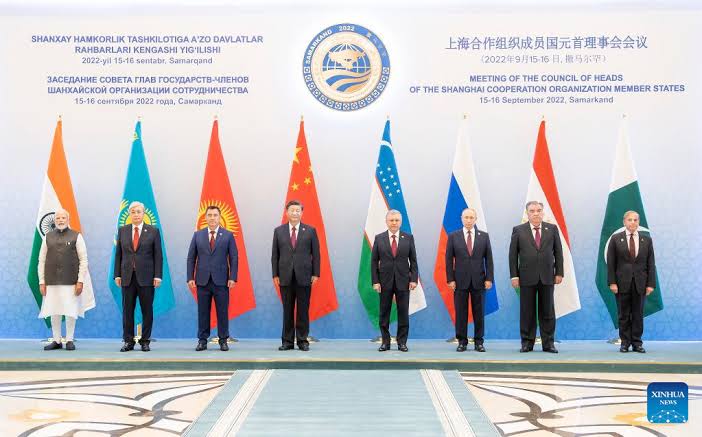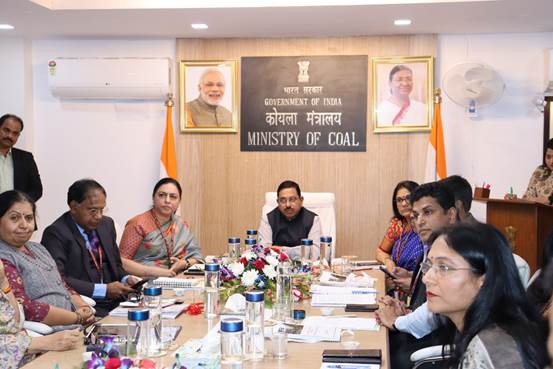Prime Minister Narendra Modi addressed Bharat Tex 2025 at Bharat Mandapam in New Delhi, marking a significant moment for India’s textile industry. Taking a walkthrough of the exhibition, he welcomed the global gathering and highlighted Bharat Tex’s growing stature as a premier international textile event. The Prime Minister emphasized how the platform brings together policymakers, CEOs, and industry leaders from across the world, fostering collaboration, innovation, and investment in India’s textile sector.
 With over 120 countries participating, Modi underscored the immense opportunities Bharat Tex offers to exhibitors, allowing them to connect with global markets and expand their businesses. Reflecting on the event’s impact, he shared that many participants from last year’s edition had successfully expanded their buyer base, boosting exports and investments in the textile industry. He urged the banking sector to support textile entrepreneurs, recognizing their role in job creation and economic growth.
With over 120 countries participating, Modi underscored the immense opportunities Bharat Tex offers to exhibitors, allowing them to connect with global markets and expand their businesses. Reflecting on the event’s impact, he shared that many participants from last year’s edition had successfully expanded their buyer base, boosting exports and investments in the textile industry. He urged the banking sector to support textile entrepreneurs, recognizing their role in job creation and economic growth.
The Prime Minister took pride in Bharat Tex showcasing India’s rich cultural heritage through traditional garments, celebrating regional craftsmanship such as Lucknowi chikankari, Banarasi silk, Kanjivaram silk, and pashmina. He stressed that India’s diverse textile traditions offer a unique strength, making this the right time to promote indigenous products globally. He recalled his five-pronged vision for the textile industry—farm, fiber, fabric, fashion, and foreign—stating that this approach is now transforming into a national mission.
Highlighting India’s achievements, Modi announced a 7% increase in textile and apparel exports last year, securing the country’s position as the sixth-largest textile exporter worldwide. He noted that India’s textile exports had reached ₹3 lakh crore, with a target to triple this figure to ₹9 lakh crore by 2030. The Prime Minister credited the sector’s growth to a decade of consistent policies and rising foreign investments, which have doubled in the textile industry over the past ten years. He reaffirmed the government’s commitment to strengthening the sector through initiatives such as the Mission for Cotton Productivity, aimed at making Indian cotton globally competitive, and investments in sunrise sectors like technical textiles and carbon fiber manufacturing.
Acknowledging the crucial role of skilled labor, Modi emphasized the importance of training initiatives such as the Samarth scheme and National Centres of Excellence for skilling. He highlighted efforts to preserve the authenticity of handloom craftsmanship in the digital age, ensuring that artisans benefit from new markets. Over the past decade, more than 2,400 major marketing events have been held to promote handloom products, and the launch of an India-handmade e-commerce platform has further boosted visibility for traditional artisans.
The Prime Minister also discussed the increasing influence of technology in fashion, citing AI-driven trend analysis and collaborations with institutions like IITs to develop new textile innovations. He pointed out the success of the Textiles Startup Grand Challenge launched last year, which encouraged young innovators to find sustainable solutions for the industry. Winners from the challenge were invited to this year’s event, along with investors eager to support new ventures. He urged the textile industry to embrace innovation while maintaining the essence of traditional craftsmanship.
Reflecting on sustainability, Modi shared insights from his visit to Paris, a global fashion capital, where discussions on environmental consciousness underscored the importance of sustainable fashion. He stressed that India is well-positioned to lead the world in “Fashion for Environment and Empowerment,” drawing from its history of eco-friendly textile production. He warned about the growing issue of “fast fashion waste,” where discarded clothing poses a severe environmental challenge. India, he noted, can turn this crisis into an opportunity by leveraging its strengths in textile recycling and upcycling. From traditional practices like weaving discarded fabrics into mats and quilts to modern innovations in circular fashion, the country has the potential to lead the global recycled textile market, which is expected to reach $7.5 billion in the coming years.
Modi recalled India’s historical dominance in the textile trade and expressed confidence that the industry would once again drive the nation’s economic progress. Bharat Tex, he asserted, is a testament to India’s resurgence as a global textile powerhouse, setting new benchmarks for success with each edition. Concluding his address, the Prime Minister extended his best wishes to all stakeholders, hoping the event would propel India’s textile industry to greater heights.
The event was attended by Union Minister for Textiles, Shri Giriraj Singh, Minister of State for Textiles, Shri Pabitra Margherita, and several other dignitaries. Bharat Tex 2025, running from February 14-17, has brought together the entire textile value chain under one roof, with over 5,000 exhibitors and 6,000 international buyers. It features a mega expo, global conferences, panel discussions, innovation pavilions, hackathons, and funding opportunities for startups, reinforcing India’s leadership in the textile industry on a global scale.




